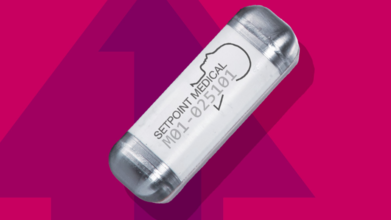- Health Conditions A-Z
- Health & Wellness
- Nutrition
- Fitness
- Health News
- Ayurveda
- Videos
- Medicine A-Z
- Parenting
- Web Stories
New Covid-19 Vaccine Policies Are Already Blocking People From Getting Shots—Who Is At Real Risk?

Credits: Canva
Amidst the many policy shift, one has stirred significant debate and confusion especially for expectant mothers. Recent changes to federal Covid-19 vaccine guidelines are already preventing some people from accessing the shots they need, raising the question: who is truly at risk now that the rules have changed?
Last month, US Health and Human Services (HHS) Secretary Robert F. Kennedy Jr. announced that Covid-19 vaccines would no longer be officially recommended during pregnancy. The decision, which appeared sudden and lacked substantial public explanation, has drawn swift concern from across the medical community. The Centers for Disease Control and Prevention (CDC) also removed Covid-19 vaccines for pregnant women from its recommended list.
In response, over 30 medical and health organizations, including associations representing obstetricians, pediatricians, pharmacists, nurses, and primary care physicians, penned an open letter expressing their alarm.
“It is vital that we ensure that pregnant women continue to have access to this prevention tool so that they can protect themselves and their young infants, a vulnerable group who is not yet eligible for vaccination,” the letter states.
The appeal specifically urges health insurers and providers to maintain coverage and access to Covid-19 vaccines for pregnant individuals without placing financial or administrative burdens on them.
Despite the policy shift, the science supporting the safety and efficacy of Covid-19 vaccination during pregnancy is clear. Multiple peer-reviewed studies have shown that pregnant women who receive the vaccine are better protected against severe disease, and that their infants may receive some level of passive immunity from their mother. Furthermore, pregnant individuals with Covid-19 face significantly higher health risks, including:
- A greater likelihood of ICU admission or ventilator support
- Elevated chances of stillbirth
- Increased rates of cesarean section and hypertensive disorders such as preeclampsia
- Higher risk of low birth weight and preterm delivery in newborns
We have strong evidence that vaccination during pregnancy is safe and effective. Without clear direction, we risk undermining public trust and creating new inequities in access,” she said.
Insurance and Access Barriers on the Rise
Another layer of complexity is insurance coverage. With the vaccine no longer formally recommended for pregnant individuals by federal health agencies, insurers may start denying reimbursement for the shot. This could lead to increased out-of-pocket costs—something that deters many from seeking preventive care.
This move has broader implications, too. If payers begin selectively covering vaccines only for those deemed at "high risk," many younger, healthier individuals may skip vaccinations altogether—not out of choice, but because of cost.
Who Is Really At Risk?
The obvious concern is the well-being of pregnant individuals and their infants, who now face new logistical, financial, and institutional hurdles to vaccination. But this is not just about pregnancy.
By signaling a step back in vaccine accessibility for a vulnerable population, these policy changes set a precedent that could affect broader public health strategy—particularly as new variants of the virus continue to emerge.
Furthermore, as Covid-19 fatigue sets in across the public and political spectrum, scaling back access now may leave the healthcare system underprepared if another surge occurs.
Experts argue that consistent and science-backed messaging is more critical than ever. Healthcare professionals are not only providers of medical care but also gatekeepers of trust. Mixed signals from federal agencies can erode that trust and leave patients caught in a web of uncertainty.
Many physicians continue to recommend Covid-19 vaccination during pregnancy and say they will do so until there’s evidence that contradicts the benefits. When policies don’t reflect the data, people suffer. This isn't just a matter of clinical guidance—it’s a matter of ethics and equity.
The shift in Covid-19 vaccine recommendations for pregnant people has already created obstacles to access, triggered confusion among patients and providers, and sparked an outcry from the medical community.
US Faces Nationwide STD Epidemic As Cases Surge Past 2.3 Million

The Centres for Disease Control and Prevention (CDC) has just dropped a reality check: more than 2.3 million Americans are living with gonorrhoea, chlamydia, or syphilis and the rates are climbing so high, it’s now officially a nationwide epidemic.
A 2023 CDC report paints a troubling picture. Chlamydia takes the top spot with 1.64 million infections, gonorrhoea follows at over 601,000, and syphilis, once on the brink of eradication, is making a bold and unwelcome comeback. In Mississippi alone, congenital syphilis (passed from mother to baby during pregnancy) has skyrocketed by a staggering 1,000 per cent. While its growth slowed slightly in the past year, the overall trend remains deeply worrying.
But what is driving this surge? Experts point to a mix of factors: dwindling sex education, earlier sexual activity among teens, gaps in prenatal care, and the fact that many people do not recognise symptoms until it is too late.
What do these bacteria look like on humans? Here is a breakdown of the three:
Chlamydia
Signs and symptoms
- In women: Often none at all, but when they do appear, they bring abnormal vaginal discharge, pain during sex, or a burning sensation while peeing. Left untreated, it can cause pelvic inflammatory disease and infertility.
- In men: Pain or burning during urination, penile discharge, and testicular pain. Some men also have no symptoms.
- Being under 25 and sexually active
- Multiple sexual partners
- Inconsistent or no condom use
Through vaginal, anal, or oral sex with someone infected, even if they do not have symptoms.
Prevention and Treatment
Consistent condom use; regular screening, especially if you are under 25 or have multiple partners; and limiting the number of sexual partners. Usually, a straightforward course of antibiotics is prescribed, but both partners must be treated to prevent ping-pong reinfection.
Gonorrhoea
Signs and symptoms
- In women: Painful urination, increased vaginal discharge, pelvic pain, or bleeding between periods. Sometimes, no symptoms at all.
- In men: Pain when urinating, pus-like penile discharge, or swelling in one testicle.
- Age under 25 and sexually active
- Multiple partners or a new partner without protection
- Previous history of STDs
Through vaginal, anal, or oral sex with an infected person. It can also pass from mother to baby during childbirth.
Prevention and Treatment
Condoms, regular testing, and talking openly with partners about sexual health. Reportedly, a single antibiotic injection is currently the go-to. It is important to note that gonorrhoea has been developing resistance to many antibiotics, making prevention even more important.
Syphilis
Signs and symptoms
- In early stages: A single, painless sore on the genitals, anus, or mouth, and swollen lymph nodes.
- In later stages: Skin rashes, fever, fatigue, and, if untreated, damage to the brain, nerves, and heart.
- Congenital syphilis: Passed from mother to baby in the womb, leading to stillbirth, premature birth, or serious health issues in newborns.
Risk factors
- Unprotected sex
- Multiple partners
- Men who have sex with men
- Lack of prenatal care
How it spreads
Through direct contact with a syphilis sore during vaginal, anal, or oral sex, or from mother to baby during pregnancy.
Prevention and Treatment
Regular STD testing, consistent condom use, and early prenatal screening for pregnant women. Penicillin injections are simple and effective, but only if caught early.
The surge in STD cases across the US is not just about risky behaviour; it is about gaps in education, healthcare, and awareness. Many people carry these infections without knowing, passing them on silently. It is clear that one should get tested regularly, use protection, and if you are diagnosed, complete your treatment and tell your partner.
FDA Approves First Neuroimmune Modulation Device for Rheumatoid Arthritis

Credits: Setpoint Medical
The U.S. Food and Drug Administration (FDA) has granted approval to the SetPoint System, a neuroimmune modulation device designed to treat adults with moderate-to-severe rheumatoid arthritis (RA). This marks a new, device-based approach for patients who have limited options due to inadequate response or intolerance to current advanced therapies.
Who Can Benefit?
The SetPoint System is intended for people whose RA is not effectively controlled with, or who cannot tolerate, advanced treatments such as biological and targeted synthetic disease-modifying antirheumatic drugs (DMARDs).
What Is Rheumatoid Arthritis (RA)?
RA is an autoimmune disease that causes painful joint inflammation, stiffness, and long-term joint damage if left untreated. While existing medications can help, some patients experience insufficient relief or serious side effects.
How the Device Works
The SetPoint System is an implantable neurostimulation device that delivers a brief, daily dose of electrical stimulation to the vagus nerve. This nerve plays a key role in regulating inflammation. By activating the body’s innate anti-inflammatory and immune-restorative pathways, the therapy aims to reduce disease activity without the systemic side effects associated with some drug treatments.
Once implanted, the device is programmed to deliver therapy automatically on a set schedule. It can remain in place and function for up to 10 years, offering a long-term treatment option without the need for daily medication intake.
Evidence from the RESET-RA Study
The FDA’s approval is based on results from the RESET-RA trial, which involved 242 patients. Participants were randomly assigned to receive either the SetPoint System or a sham (inactive) device.
The trial met its main goal, showing that more patients using the SetPoint System achieved at least a 20 percent improvement in symptoms, known as the ACR20 response, at three months, compared to those in the control group. Benefits in response rates and disease activity were sustained through 12 months of follow-up.
Remarkably, by the 12-month mark, three out of four participants had not used biologic or targeted synthetic DMARDs.
Safety Profile
The device placement procedure is minimally invasive and performed on an outpatient basis. The therapy was generally well tolerated, with a low rate of related serious side effects, reported in only 1.7 percent of patients in the trial.
Expert POV
Dr. Mark Richardson, principal investigator of the RESET-RA study and professor at Harvard University, said the approval reflects a promising new direction for autoimmune disease treatment.
“The approval of the SetPoint System highlights the potential of neuroimmune modulation as a novel approach for autoimmune disease, by harnessing the body's neural pathways to combat inflammation,” Dr. Richardson said in a statement. “After implantation, the SetPoint device automatically administers therapy daily, simplifying care for people living with RA.”
With this approval, the SetPoint System becomes the first FDA-approved neuroimmune modulation device for RA, adding a non-drug option to the treatment landscape. For patients struggling with medication side effects or insufficient relief, it offers a potentially life-changing alternative that works with the body’s own systems to restore immune balance.
Eli Lilly’s New Weight Loss Pill Helped People With Obesity Shed Nearly 15% In Late-Stage Trials

Credits: Canva
Eli Lilly’s experimental weight loss pill, orforglipron, may soon shift the landscape of obesity treatment. In a Phase 3 clinical trial that spanned more than 3,000 adults, the once-daily pill helped participants lose an average of 12.4% of their body weight over 72 weeks—with minimal lifestyle restrictions and no needles involved.
The company says these findings mark a turning point in the battle against obesity, one of the most pressing global health issues today. Here’s how this oral medication is poised to change everything we know about weight loss treatment.
According to Eli Lilly’s preliminary data, adults who took the highest dose of orforglipron lost an average of 27.3 pounds (12.4% of their body weight) over roughly a year and a half. Nearly 60% of those participants lost at least 10% of their weight, and almost 40% lost at least 15%.
These results are on par with injectable GLP-1 medications like Zepbound and Mounjaro—both also made by Eli Lilly—which have become blockbuster drugs in the obesity and diabetes market.
Dr. Céline Gounder, editor-at-large for public health at KFF Health News, put it bluntly in a CBS interview: “This is what we see with injectables. It’s impressive that a pill could match that.”
The key distinction? Orforglipron is not a peptide-based medication. That makes it easier for the body to absorb and eliminates the need for the strict dietary rules that apply to oral peptide drugs like Novo Nordisk’s Rybelsus.
How GLP-1 in Pill Form Works?
Orforglipron belongs to a class of medications called GLP-1 receptor agonists. These drugs mimic a gut hormone that plays a critical role in appetite regulation and glucose metabolism. They slow down stomach emptying, curb hunger signals in the brain, and help stabilize blood sugar levels.
Until recently, the most effective GLP-1 medications had to be injected, often weekly. Eli Lilly’s innovation—compressing this powerful mechanism into an oral pill—is a major step forward.
Unlike Rybelsus, the only approved GLP-1 pill on the market (which requires fasting and water restrictions), orforglipron is designed to be taken at any time of day, with or without food or water. That alone could make a big difference for patient compliance and everyday ease of use.
Are There Significant Side Effects For This Pill?
The benefits are clear, but what about the risks? As with other GLP-1-based drugs, gastrointestinal side effects were common. The most reported issues included nausea, diarrhea, constipation, and vomiting. Between 29% and 34% of participants experienced nausea—slightly higher than the 25–29% range seen with injectable Zepbound.
More significantly, about 10% of those on the highest dose had to drop out of the study due to side effects. While not uncommon in drug trials, it’s a notable figure for clinicians to weigh when considering patient suitability.
Still, experts say the side effect profile remains consistent with what is expected from GLP-1 medications. Importantly, orforglipron was also associated with improved markers of cardiovascular health, such as lower cholesterol and blood pressure.
What Makes Orforglipron Stand Out?
One of the most promising aspects of this pill is its potential to support long-term weight maintenance. Eli Lilly is also studying orforglipron’s role in helping people who initially lose weight on injectable drugs but are looking for a more manageable, sustainable option moving forward.
In essence, this pill could serve as a bridge—or even an off-ramp—for those who can’t or don’t want to stay on injectable medications forever. The convenience factor is huge.
There’s also the question of cost. Manufacturing pills is typically cheaper than producing injectables, and while pricing hasn’t been announced yet, orforglipron could offer a more affordable option for millions of people who need access to effective obesity care.
Eli Lilly has announced plans to submit orforglipron for regulatory approval by the end of 2025, with hopes of a global launch to follow soon after. If approved by the FDA and other agencies, the drug could hit the market in 2026.
This timeline is aggressive but realistic, given the urgency of the obesity crisis. More than 40% of American adults are classified as obese, according to CDC data. The economic burden and health consequences—including increased risk of heart disease, stroke, diabetes, and certain cancers—are staggering.
The public health need is urgent, and the demand for safe, convenient, and effective weight-loss treatments is at an all-time high. A pill like orforglipron, if approved, could help close that gap.
Despite the promising clinical data, not everyone is convinced just yet. Eli Lilly’s stock fell nearly 14% on the day of the announcement. Some investors expected even greater weight-loss figures or a better side effect profile.
But experts caution against reading too much into the stock market’s knee-jerk reactions. The potential of a widely accessible, non-peptide, once-daily GLP-1 pill is enormous—and it could spark a new era in weight management.
If successful, orforglipron will likely intensify the competition with Novo Nordisk, whose Wegovy and Ozempic have dominated the obesity and diabetes space for the past few years. The race is now on for the first truly scalable, cost-effective oral GLP-1 option—and Lilly may have just edged ahead.
Eli Lilly’s orforglipron isn’t just another weight-loss drug. It’s a potential paradigm shift in how we approach chronic weight management.
If it clears the final regulatory hurdles and delivers on its early promise, orforglipron could bring highly effective, user-friendly weight-loss treatment to millions of people—no needles, no meal timing, no fuss. That’s the kind of change the obesity crisis has been waiting for.
© 2024 Bennett, Coleman & Company Limited

